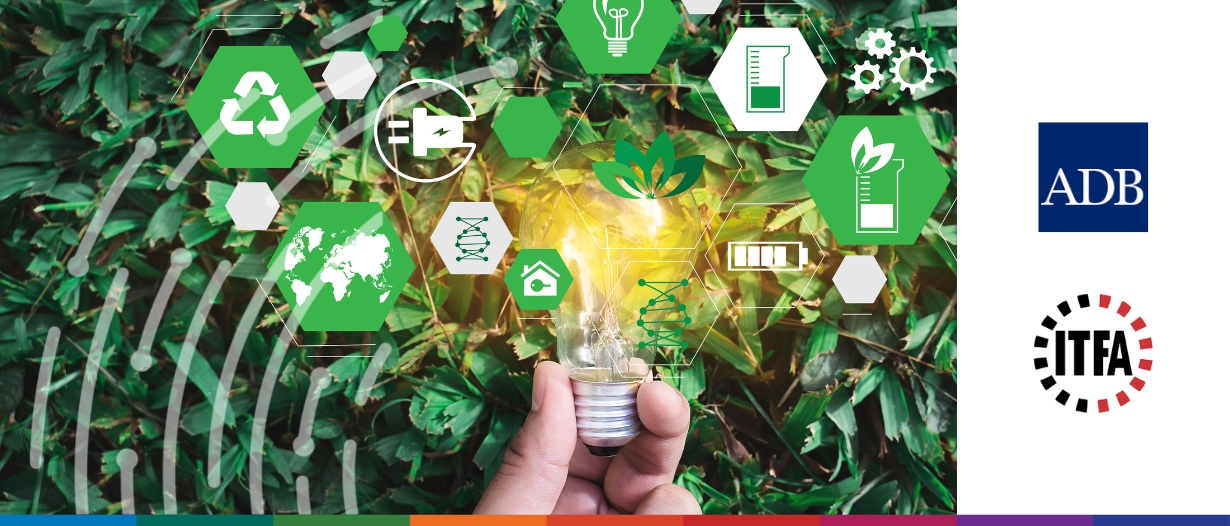Estimated reading time: 5 minutes
Listen to this podcast on Spotify, Apple Podcasts, Podbean, Podtail, ListenNotes, TuneIn
Since 195 countries signed the Paris Agreement at COP 21 in 2015, ESG has been a central talking point in the trade finance world. The term “green finance” has seen a 300% search increase on Google from 2015-2023.
Shifting the conversation towards sustainability was undoubtedly an important step, as the shipping and trade sector contributes around 20% of global emissions. But what has come from this dialogue?
The trade finance community continues to finance fossil fuels, and there have been numerous examples of greenwashing in recent years. What are realistic expectations for ESG standards, and how does the trade finance community accomplish them?
To better understand how the trade finance industry can take the next steps in sustainability, Trade Finance Global (TFG) spoke with Roberto Leva, trade & supply chain finance relationship manager, Asian Development Bank (ADB) and Johanna Wissing, board member of ITFA.
Walking the walk
Simply by reading the news in the past few years, one would know what ESG means and what the aspirational goals are.
Johanna Wissing said, “We are all sort of familiar from a day-to-day perspective what ESG stands for. This is not a mystery anymore, as it might have been five or six years ago”
Now that ESG is a mainstay term in the trade finance industry, ITFA has released two white papers on the practical next steps for its implementation in international trade. These white papers focus on creating common frameworks and standards, another challenge in globally implementing ESG practices.
The ADB has also focused on educating members and institutions on how to realistically embrace ESG standards in their company policies. However, they have also gone a step further, they have created a credit facility to cover the financial risks of the clean energy transition.
Roberto Leva said, “Our program is not going to support oil transactions anymore from July, excluding a couple of exceptions for economies that really are economically dependent on oil for the moment”
Though the ADB and other multilateral institutions are off to a good start, this is a much larger topic to deal with. To truly succeed, these programs need cross-sector collaboration.

Roberto believes that “The role of a multilateral is to make itself useless. So we need to help set up trends, build up the necessary products, and then slowly step away.” It is important for multilaterals to support the private sector in the transition by promoting the necessary investment in green technologies.
However, there needs to be a system to ensure ESG standards are met. Johanna said, “Tech can certainly play a huge role in terms of data collection, … tracking the origin of goods, and tracking that certain environmental standards or labour standards have been adhered to.”
As multilaterals and private companies continue to invest large sums of money in the green transition, there must be a uniform way to track compliance.
ESG in developing countries – a just transition
Though ESG standards stem from well-intentioned places, they cannot only be viewed in terms of the Western world.
Johanna stated, “Let’s face it, the majority of the world’s population lives in the developing world.” ESG goals cannot be uniform, as different people and different countries will have varying needs in the coming years.
That being said, it is still important to create an ESG framework for banks and FIs. This is what the ICC did with its Wave 1 framework. The ADB is attempting to bridge the gap between reports like the ICC, and on-the-ground efforts, specifically in developing countries.
Roberto said that the ADB created a template for ESG risk management trade finance with the collaboration of several banks in the ADB Trade and Supply Chain Finance Program (TSCFP) portfolio with the hope to create an industry framework and to get live feedback.
Though the Western world claims it wants to get rid of dirty fossil fuels, it is not a realistic step to impose immediate, and stringent ESG standards on developing countries. Demanding that developing companies stop producing and using fossil fuels simply will not move the ESG needle.
Roberto believes that the world needs to embrace a different strategy, “I would say that the very important key message is transition.”
This is where public and private partnerships and ESG standards can make the biggest impact. A just transition is the most reasonable, and realistic next step in the ESG journey.
Properly financing green transition requires more than just investments from afar. To truly understand a country’s needs, financiers need to have a social and cultural awareness of the situation, as emphasised by the “S” in ESG.
Roberto says it is important that a lender has “an understanding of what the transition plans for that specific countries are and… speak to their customers, to their clients, to understand how they can better facilitate more sustainable activity in their portfolio.”

Why is it taking so damn long and how do we move forward?
We all know that ESG is important, but why can’t the trade finance community act quickly?
Johanna recalled, “[Trade finance] is also still one of the oldest sort of instruments in the toolbox of financing…Letters of credit date back to the age of Medici”
But that doesn’t mean that there are no expectations of progress moving forward. Over the next year, the trade finance community should “have made some progress on creating a common framework of standards…continue on the education piece, and [communicate] the implications of the transition.”
For Roberto, the next 12 months should be about training, and focusing on specific solutions. Leading by example and developing a specific “ESG framework that actually helps build and develop new sustainable trade” will help spur sector-wide action.

































